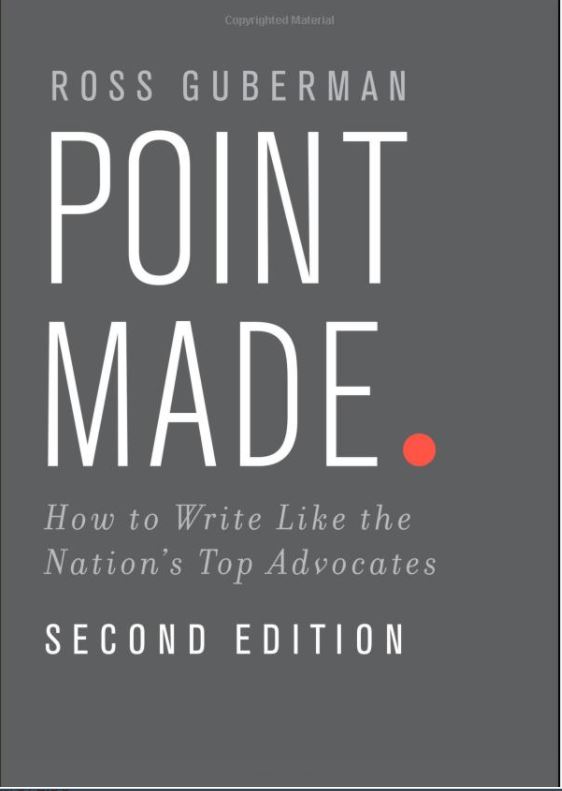Preliminary Statements and Introductions: Checklists and Models
Craft a concise, effective, and persuasive introduction in little time by looking at your dispute through these four lenses:
- The Narrative Lens. Begin with a paragraph or two that covers what many attorneys never explain at all: who the parties are; when, where, and how the dispute arose; what question the dispute is over and why your client is in the right (in my book, Point Made, I refer to this as the Brass Tacks approach).
- The Logical Lens. List three or four specific points you would make to a judge who gave you just 60 seconds to explain what you want and why you should get it.
- The Pragmatic Lens. Give the court a reason to feel good about ruling in your favor—or to feel bad about ruling in your opponent’s.
- The Contrasting Lens. Draw a line in the sand between the two competing views of your dispute.
Narrative Models
Tip: Interview yourself, answering the key questions you would have if you were reading about your case online: Who are the parties? When and where and how did the dispute take place? What question is the case trying to answer? Why should you win? Your answers should both prep the court for what’s to come and sound themes that work to your client’s advantage.
Eric Holder’s motion to dismiss, In re Chiquita Brands Int’l
Plaintiffs in this action are relatives of five American missionaries who were abducted for ransom and tragically murdered in the mid-1990s by a communist guerilla group in Colombia, known as the Fuerzas Armadas Revolucionarias de Colombia. Now, more than a decade later, they seek to hold Chiquita Brands International, Inc. liable for those deaths under the Antiterrorism Act, and Florida and Nebraska tort law. There is no allegation, however, that Chiquita was involved in the kidnapping and murder of the decedents, that Chiquita intended that these despicable acts occur, or that Chiquita even knew about them until plaintiffs brought this lawsuit.
George Conway III’s motion to dismiss, In re Lions Gate Ent. Corp. Secs.
At issue in this case is whether Lions Gate Entertainment Corp. was required to disclose an SEC investigation. That investigation resulted in a settlement, announced on March 13, 2014, in which Lions Gate consented to a set of negotiated charges and agreed to pay a civil monetary penalty in an administrative proceeding before the SEC. The charges did not involve any assertion of intentional fraud. They did not involve any charges against individual officers and directors. And they did not involve the company’s financials or the health of any line of the company’s business, but rather only some unique events that had occurred during a takeover battle some four years earlier.
The settlement’s only financial impact on the company was the civil penalty, which, at $7.5 million, amounted to less than 0.27 percent of Lions Gate’s total assets at the time. The stock did not even drop (in fact, it rose) when, on February 6, 2014, a little more than a month before the settlement was concluded, Lions Gate had announced that “[g]eneral and administrative expenses increased by $18.7 million,” an amount that “included an accrual related to an anticipated settlement of a legal matter that goes back several years”—which turned out to be the SEC settlement that went through five weeks later.
Beth Wilkinson’s motion for summary judgment, Roanoke River Basin Ass’n v. Duke Energy Progress
This lawsuit is premised on a disagreement with the considered judgment of the North Carolina Department of Environmental Quality. That state agency, acting pursuant to authority delegated by the Environmental Protection Agency, has issued permits approving Duke Energy Progress, LLC’s operation of a wastewater treatment system at the Mayo Steam Electric Generating Plant since that site opened. This system includes a settling basin that separates coal-ash solids from wastewater and stores those solids. DEQ knows the basin is unlined and that, because all earth is permeable, dissolved constituents from the ash can migrate into the surrounding groundwater. Nonetheless, DEQ has inspected Mayo dozens of times and repeatedly reissued the permit without requiring any change to the basin to make it watertight.
Logical Models
After you’ve spun the dispute as a narrative, explain what you want the Court to do about it and list three or four reasons it should do so. Make your reasons factual, not circular.

Cristina Arguedas’s motion to dismiss the indictment, United States v. FedEx
[The] government subverted the grand jury’s vital role as a bulwark against improper prosecutions by misleading the jurors about the two most crucial legal concepts in the case.
First, the prosecution misinstructed the grand jury concerning the proof that could satisfy the mens rea elements of the offenses under consideration. That instruction was incorrect: neither knowledge nor specific intent . . . .
Second, the prosecution failed to properly inform the grand jury about the line that differentiates culpable from innocent conduct. The law recognizes that carriers . . . .
Neal Katyal’s respondent’s brief for Minnesota in Minnesota v. [Derek] Chauvin
The arguments in the Petition do not change this commonsense conclusion.
First, there is no conflict in the Court of Appeals. In case after case, the Court of Appeals has confirmed that its decisions are precedential from the day they issue. Petitioner’s entire theory for review rests on a single line of dictum in a single Court of Appeals decision . . . . But the opinion below spends three pages analyzing Collins and concludes that . . . .
Second, Petitioner now points to two jurisdictions which have adopted express rules limiting the precedential effect of a pending intermediate appellate decision. But that just proves that the Court of Appeals got it right: Minnesota’s rules lack any such provision.
Pragmatic Models

Especially when you represent a not-so-sympathetic party, explain what turns on the outcome if you lose. Such consequences can include suggesting something irrational, upsetting expectations, creating unfounded rules, encouraging undesirable conduct, or discouraging desirable conduct.
Don Verrilli, FASORP v. Harvard Law Review
FASORP seeks extraordinary judicial relief that would transform this Court into an Article III Editor-In-Chief, with the responsibility to oversee the Law Review’s editor- and article-selection decisions.
Mary Jo White, In re Bank of Am. Corp. Secs., Derivative and ERISA Litig.
[T]o hold [former Bank of America CEO] Mr. Lewis liable in these circumstances would set a novel and very troubling precedent, exposing CEOs to liability when they follow the reasonable judgments of their subordinates who opine and consult with counsel on complicated legal issues instead of imposing their own[] less-informed will.
Contrasting Models
“Every brief,” said former Third Circuit Judge Ruggero Aldisert, should begin by “identifying the flashpoint of controversy” by contrasting two competing views. What’s really driving the dispute?
Ruth Bader Ginsburg’s amicus brief for the ACLU, Regents of the Univ. of Cal. v. Bakke
The issue in this case is not whether the Constitution compels the University to adopt a special admission program for minorities, but only whether the Constitution permits the University to pursue that course.
Morgan Chu’s motion for summary judgment, Univ. of Utah v. Max Planck Gesellschaft
At root, this is not a case about inventorship attribution. Utah wants money, and lots of it.
 By
By




